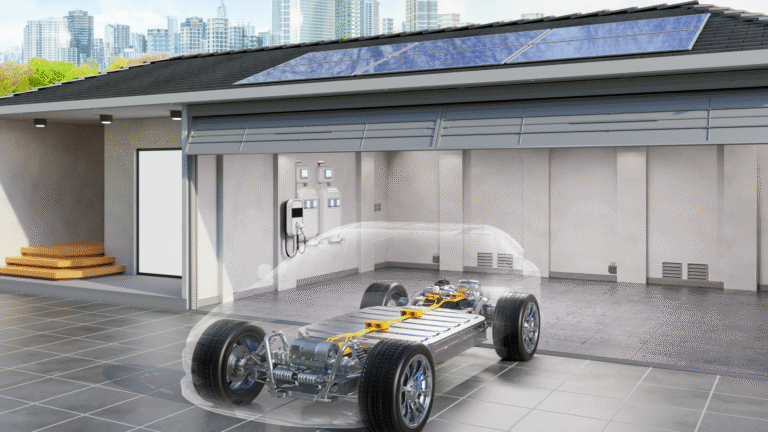Battery warranty language can feel like reading legalese — years, kilometres, capacity thresholds, exclusions — and interpreting it matters because the battery is often the most expensive EV component. This plain-English guide explains the common parts of battery warranties in Australia, what is generally covered, typical exclusions, how to preserve warranty rights and what to check when buying new or used.
Table of Contents
- The two main warranty dimensions: time and capacity
- What manufacturers commonly cover (defects & premature failure)
- What they commonly exclude (wear, abuse, and exclusions)
- Practical steps to preserve your warranty and document issues
- Buying used: questions to ask and evidence to demand
- Claim process: expectations and typical timelines
- FAQs
1. The two main warranty dimensions: time and capacity
Most battery warranties specify two things:
- Time and kilometres (for example, 8 years or 160,000 km) — during which manufacturers will repair or replace defective packs.
- Capacity retention guarantee — a promise that the battery will retain a minimum percentage of original capacity (commonly expressed as 70%–70–80% range) within the warranty period.
Both pieces matter: time/kilometres protect against sudden failures, while capacity guarantees protect against excessive degradation.
2. What manufacturers commonly cover (defects & premature failure)
- Manufacturing defects: faulty cells, weld faults, or pack assembly errors are typically covered.
- Premature capacity loss below stated threshold: if the pack’s usable capacity falls below the guarantee percentage within the warranty window, manufacturers will often repair or replace—or offer a pro-rated replacement.
- RMA & replacement for severe faults: in the event of thermal incidents, wiring faults or controller failures related to the battery pack, warranty coverage usually applies.
In practice, legitimate manufacturing faults present clear diagnostic signatures: error logs, cell imbalance beyond normal, or sudden capacity drops.
3. What they commonly exclude (wear, abuse, and exclusions)
- Normal wear & expected degradation: capacity loss over time within the defined threshold is not a claim. Batteries chemically age; the warranty defines acceptable loss.
- Improper charging habits or non-approved gear: using unapproved fast-charging hardware, hacked chargers, or repeated abuse that contradicts the manual may void coverage.
- Physical damage, water ingress or corrosion due to neglect: damage from floods, off-road impacts or salt neglect often falls outside warranty.
- Aftermarket modifications and unauthorised repairs: third-party cell swaps, aftermarket battery management modifications or non-OEM repairs typically void warranty.
- Commercial misuse beyond stated duty cycle: using consumer packs for heavy duty-duty taxi or courier work if the warranty excludes such use.
Read the exclusions carefully — many disputes hinge on what the manufacturer considers “normal use.”
4. Practical steps to preserve your warranty and document issues
- Follow the owner’s manual charging and storage recommendations (charging limits, fast-charge frequency, temperature limits).
- Use approved charging equipment and certified installers for home wallboxes. Keep receipts and invoices.
- Log service and repairs: maintain a folder with service receipts, software update notices and any battery health reports.
- Get regular battery health checks from authorised service centres (especially before long trips or if you experience range anomalies).
- Notify the dealer ASAP if you see sudden capacity loss or error warnings — delay can complicate claims.
Documentation is often the difference between a smooth warranty claim and a rejected one.
5. Buying used: questions to ask and evidence to demand
- Battery State-of-Health report (SoH or capacity % compared to new) from a dealer or independent tester.
- Service history and software update records.
- Any accident history including saltwater exposure or flood claims.
- Is the warranty transferrable? Many warranties transfer, some do not or have reduced terms for second owners.
If the seller can’t provide a clear battery health printout and service record, factor replacement risk into the price.
6. Claim process: expectations and typical timelines
- Initial diagnostic: dealer tests pack, BMS logs and charging data.
- Authorisation: if a fault is found, manufacturer authorises repair or replacement; sometimes a pro-rated approach is used for partial between-usage periods.
- Repair vs replacement: minor BMS or module replaces are common; full pack replacement is rare but possible for catastrophic faults.
- Turnaround time: can vary from days for simple fixes to weeks/months for pack replacements depending on parts and logistics — plan transport and alternate mobility during claims.
Ask your dealer for expected timelines and loan car options when you initiate a claim.
FAQs
Q: Does fast-charging void the warranty?
A: Not automatically. Most warranties accept occasional DC fast charging but may call out excessive or unsupported patterns. Follow the manual’s guidance on fast-charging frequency.
Q: What does 70% capacity guarantee mean?
A: It means the manufacturer promises the battery will retain at least 70% of its original usable capacity for the warranty duration; below that triggers a claim possibility.
Q: Are battery warranties transferable if I sell the car?
A: Often yes, but some manufacturers limit transferability or require admin fees — check the specific warranty terms.
Conclusion
Battery warranties protect major risks — manufacturing defects and excessive early degradation — but they are not a complete shield against wear, misuse or environmental damage. Preserve warranty rights by following the owner’s manual, using approved chargers, keeping service records and getting battery health checks before buying used. Clear documentation and sensible charging habits are the most powerful ways to keep your battery — and your wallet — in good shape.
Meta description: Understand EV battery warranties in Australia: duration vs capacity guarantees, typical exclusions, and practical tips to preserve warranty rights when buying or owning an EV.
